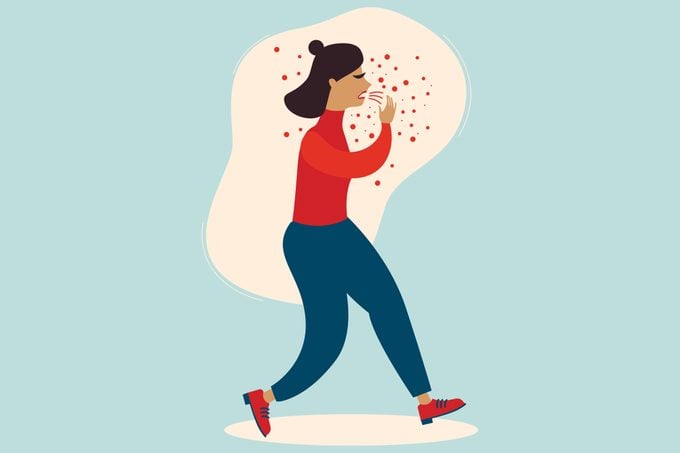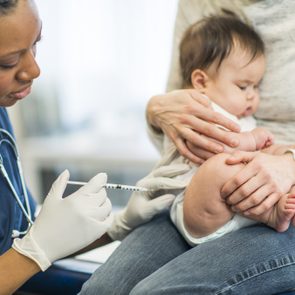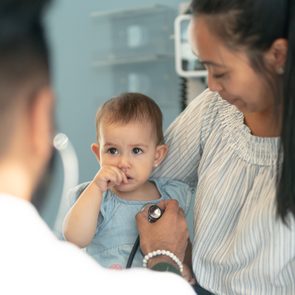Pertussis Precautions: 6 Ways Stop the Spread of Whooping Cough
Updated: Jun. 28, 2021
A vaccine is the best way to prevent pertussis, or whooping cough, but there many other pertussis precautions you can take to slow and stop the spread.
The importance of preventing pertussis
You may not hear about it often, but pertussis, or whooping cough, is far from absent in the modern world.
After reaching an all-time low of 1,248 cases in the United States in 1981, thanks largely to an effective vaccine, annual cases have risen again, reaching almost 50,000 in 2012.
The infection is most dangerous in small babies, who can end up in the intensive care unit and even die. And while it would be unusual for older children and adults to actually die from pertussis, it’s far from benign, says Marian Michaels, MD, an infectious diseases specialist at UPMC Children’s Hospital of Pittsburgh.
People have coughed so hard that they’ve cracked ribs and even developed hernias.
“There’s no reason why you can’t prevent pertussis,” says Len Horovitz, MD, a pulmonary specialist with Lenox Hill Hospital in New York City.
Here are the pertussis precautions you should take to help prevent the disease and slow the spread in infants, kids, teens, pregnant women, and adults.
(Learn about diseases you didn’t know still existed.)
What is pertussis?
Pertussis is a highly contagious infection caused by a bacterium called Bordetella pertussis.
It’s more commonly known as whooping cough, a name that comes from the peculiar “whooping” sound patients make when they’re trying to get their breath back after a coughing fit.
While violent coughing fits are the hallmark symptom of pertussis, they don’t start right away. The initial symptoms, says Dr. Michaels, resemble a cold.
Once whooping cough takes hold, symptoms can last for months. And you can get it again.
How does pertussis spread?
Whooping cough is spread primarily from person to person through respiratory droplets and aerosolized particles from coughing and sneezing.
“Whooping cough is a very violent kind of cough, so when a person with whooping cough coughs, it’s expelled quite a distance,” says Dr. Horovitz.
Hence its high transmission rate.
“If you have someone with whooping cough in a household where some of the people are susceptible, you’re going to have over 90 percent become infected,” says Dr. Michaels.
Sick people are most contagious up to three weeks after the cough begins, but because initial symptoms can be mistaken for a cold, people can spread pertussis without knowing it.
The bacterium can survive on surfaces, but this isn’t the main way it’s transmitted.

Pertussis precautions to take
When it comes to preventing whooping cough, it’s quite simple: get vaccinated. The vaccines are really the best way to prevent transmission and slow the spread.
Aside from vaccination, there are other precautions you can take to prevent an outbreak in your family.
Here are a few preventative measures experts recommend you take to prevent the spread.
About the vaccines
There are two types of whooping cough vaccines, both of which prevent against not just pertussis but also diphtheria and tetanus. The DTaP vaccine is for kids two months to seven years, while Tdap is for everyone older than that.
(Learn more about the differences between the Tdap vs. DTaP vaccines.)
Babies usually get their first dose of DTaP at two months of age, followed by four more by the time they’re four to six years old.
Because immunity wanes with time, children 11 to 12 should get a Tdap booster. And adults should get a booster every 10 years.
Importantly, people who are pregnant should get a Tdap vaccine during their third trimester. This will protect their babies before they have a chance to be immunized. People who have contact with the baby should also be vaccinated.
It’s difficult to pinpoint the exact efficacy of the vaccines, but they’re at least 70 percent effective, says Dr. Michaels.
Ask about antibiotics
Because the vaccines aren’t perfect, other precautions are also important.
If someone in your household has been diagnosed with the condition, preventive antibiotics can help you and other people who’ve been in contact with the patient avoid getting ill.
It’s especially important that young children and people who are pregnant get antibiotics.
“If someone gets exposed to someone with whooping cough, we can give them azithromycin or erythromycin and prevent them from getting sick,” says Dr. Michaels.
People who are sick and get antibiotics stop being infectious after five days of taking the medications. During that five-day window, they should quarantine themselves, says Dr. Michaels.
(Here’s what to know about the side effects of antibiotics.)
Wash your hands
Lifestyle measures to prevent infectious diseases should be fresh in your minds during the Covid-19 pandemic. First among them is washing your hands often and well.
Ideally, you’ll wash your hands for 20 seconds with soap and water. The next best solution is using hand sanitizer with at least 60 percent alcohol.
Cover your cough
If you think you have any type of infectious illness, you should cover your mouth and nose with a tissue when you cough or sneeze. That tissue should then go in the wastebasket to reduce the chances that anyone will come in context with it.
If you don’t have a tissue handy, cough or sneeze into your elbow or upper sleeve. In other words, don’t cough into your hands.
“You should never cough out into the atmosphere,” says Dr. Horovitz.
Keep your distance
If you can manage it, don’t be around other people when you’re sick. This doesn’t just go for whooping cough; it’s a good rule to follow for any other infectious disease.
And remember that the early phases of whooping cough may actually look like a cold.
“People need to take some responsibility for not spreading the disease, so if they’re sick they should really take that seriously and not go out and spread that disease to others,” says Dr. Michaels.
People who aren’t sick may think about practicing social distancing, especially if you know a person has a transmittable disease.
“Pay attention to the illnesses in our friends and colleagues,” she adds.
We don’t know how far droplets and particles from a person with pertussis can travel, but the six-foot rule for Covid-19 may not be enough, says Dr. Horovitz. It also depends on whether you’re inside or outside and what the ventilation is like.
Wear a mask
Yes, you read that right. We know that the U.S. mask mandate, set in place to stop the spread of Covid-19, has been dropped for fully vaccinated folks. But that doesn’t mean you should throw out your masks.
Since people started wearing masks, “we’ve seen less common cold, less strep, less pertussis,” says Dr. Horovitz.
The most recent flu season was practically nonexistent, as was respiratory syncytial virus (RSV), a common infection in children, says Dr. Michaels.
“It’s not a new strategy. We have used this for transplant patients and other vulnerable populations for decades with good outcomes,” she says, adding that she still wears her mask in many indoor settings as well as crowded outdoor environments.
Yeah, you may be tired of wearing a face mask during the pandemic. But the fact remains that masking works.
“If you’re sick or somebody around you is sick, you put on a mask. It’s really the same principle,” says Dr. Horovitz.
Next, find out the reasons to wear a mask other than Covid-19.

















